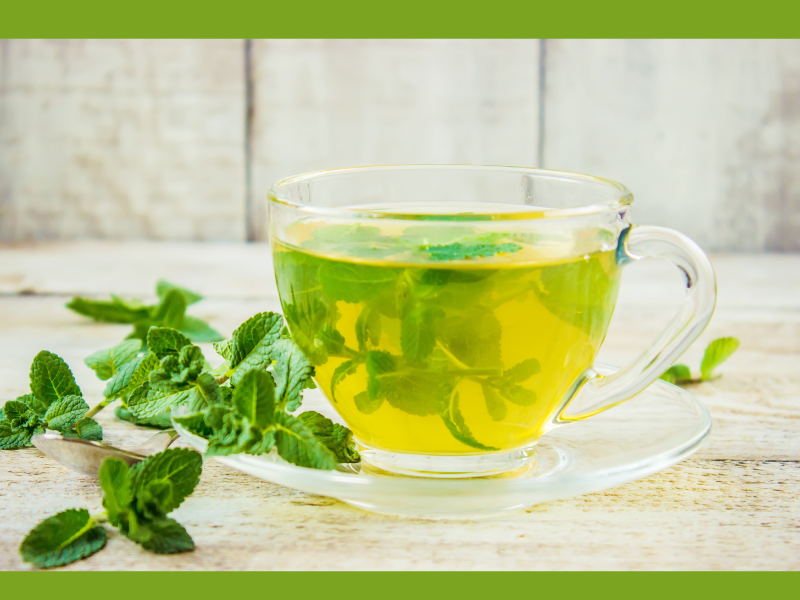“You can never get a cup of tea large enough or a book long enough to suit me.” C. S. Lewis accurately captures the sentiment of all tea and book enthusiasts. Tea has become the most prominent beverage worldwide as healthy living has become more popular. In 2023, the global tea market’s revenue reached USD 120.7 billion and this figure is predicted to rise further. When we look at the reasons, they cover a broad spectrum of topics, such as consumer behaviour, consumption trends, market tactics, and geographical boundaries. Let us sip in style and navigate the tea trends in the beverage industry.

Exploring the latest tea fads
Brewing wellness: Embracing the rise of herbal tea:
Customers are moving to better options, which is not only a choice but also a declaration of conviction—the understanding that each beverage has the potential to improve both personal health and the environment. Herbal tea comprises of spices with herbs and offer a number of health benefits. Among the most popular herbal drinks are chamomile, ginger, and green teas. If tea companies offer these options and successfully promote their wellness and health benefits, they will be able to adjust to shifting consumer demand achieving success.
Consumption of Functional teas:
The rise in demand for functional teas has made tea companies come up with new flavours driven by innovative upstarts. These teas target non-tea drinkers by highlighting their health benefits and attracting a new generation of active and healthy consumers. Turmeric tea and green tea are among the most well-liked functional tea varieties.

The Matcha Movement:
The global matcha tea market is anticipated to grow by USD 3.8 bln with a CAGR of 6.6 percent. Matcha tea is made of ground-up tea leaves with a creamy flavour loaded with antioxidants. It facilitates improved mental health, a faster metabolism, and increased energy levels. The tea has gained huge traction and is connected to leading a healthy and holistic lifestyle.

The Surging demand of Loose-leaf tea:
In recent years, we have seen an increase in the popularity of loose-leaf tea due to consumer demand for premium tea. In contrast to the ones in bags, it is of a higher calibre. Loose-leaf tea is more nutritionally potent, has a powerful flavour, and creates a more genuine tea experience because of its intense flavour, distinct taste, and freedom to blend mixtures.

Palate Pleasers:
The tea market is witnessing a surge in popularity and creativity in canned or ready-to-drink (RTD) teas. Naturally, this is a reaction to the fast-paced lifestyles and wellness-focused interests of contemporary consumers. Demand for these easy-to-transport options has surged, leading companies to create new blends and increase the variety of RTD tea options they provide.
Nurturing Green Future:
The increasing demand for sustainable products from consumers goes in tandem with an emphasis on wellness. Since consumers are conscious of the effects their purchases have on the environment and society, the tea industry is concentrating on fostering sustainability. Tea firms are attempting to be more environmentally friendly in a number of ways, such as by using recycled packaging, obtaining their tea from farms that practise sustainability, and conserving water.

Key insights shaping the global tea market and geographical distribution
By 2025, the global tea business is predicted to reach 268.5 billion, with a jump in consumption to around 7.4 billion kg. This is because the tea sector is going through major changes due to new trends that are changing the industrial environment. The demand for herbal and specialty teas has increased as customers look for healthier beverage options, raising the value of the tea business to unprecedented levels.
The amount of tea that consumers drink is increasing, and as a result, tea has become a daily routine for those who want to be physically and mentally well. The global consumer consciousness surrounding carbonated beverages and health concerns has transformed the tea industry, resulting in a wider assortment of tea choices and the acceptance of ethnic characteristics. The tea industry’s dynamic is always changing, and tea trends are ready to keep growing and adapting to satisfy consumers’ shifting needs across the globe.
The rise of tea in various regions has been fueled by a variety of causes, including changing taste preferences, cafe lifestyles, growing awareness of the health benefits of tea, and geography.
Source
| Region | Growth rate (2023-28) | Market Volume(2028) | Preferred tea |
| North America | The growth rate of the tea market is anticipated to increase by 3.19% | The estimated market volume will be USD 3.8 bln | Herbal and specialty teas |
| Europe | The growth is projected to increase by 5.75% | The resulted market volume would be USD 15.1 bln | Traditional black tea varieties and herbal infusions |
| Asia-Pacific | An increased growth rate of 5.13% | A market volume of USD 105.9 bln would be observed | Green tea |
| South America | Projected growth rate of 4.70% | Market volume increase of USD 120 bln | Herbal tea and exotic blends |
| Middle East | Increased growth of 0.53% | Projected market volume of USD 102.1 mln | Strong, spiced teas |
| Africa | Estimated growth of 11.15% | Anticipated market value USD 21.7 bln | Traditional and flavoured teas |
Sip, savour and stay trendy
As we traversed through the various trends, it was observed that the tea industry is ever-evolving. Countries are adopting this beverage because of ethnic and health-conscious preferences. Turkey is leading in the consumption of tea, while China leads in its production. Tea is becoming increasingly popular for its numerous health advantages due to its natural components, which include flavonoids and antioxidants. These trends will play a vital role for tea businesses that are looking to expand, adapt, and stand out.
Blog by Tamanna Shaikh.




















